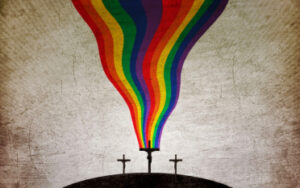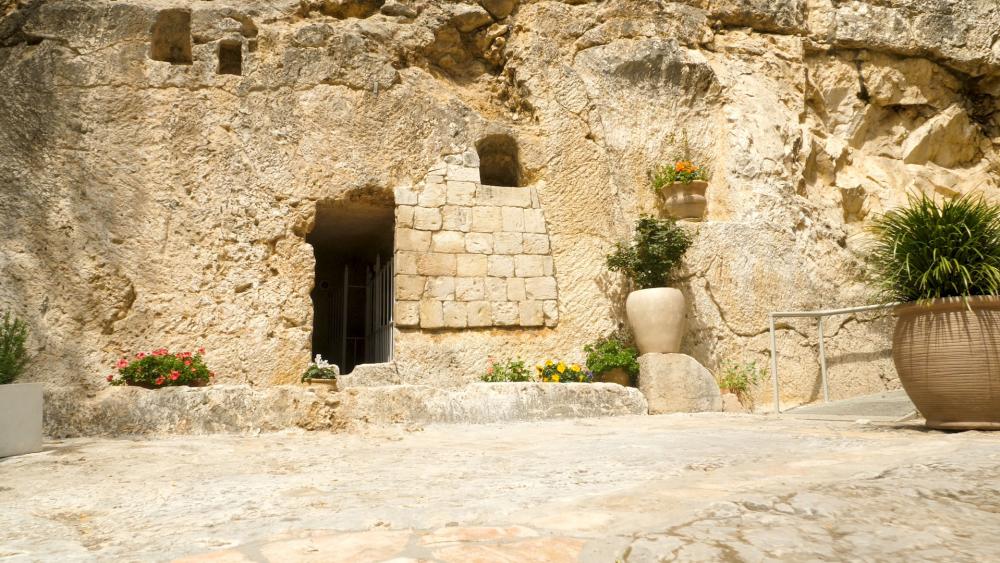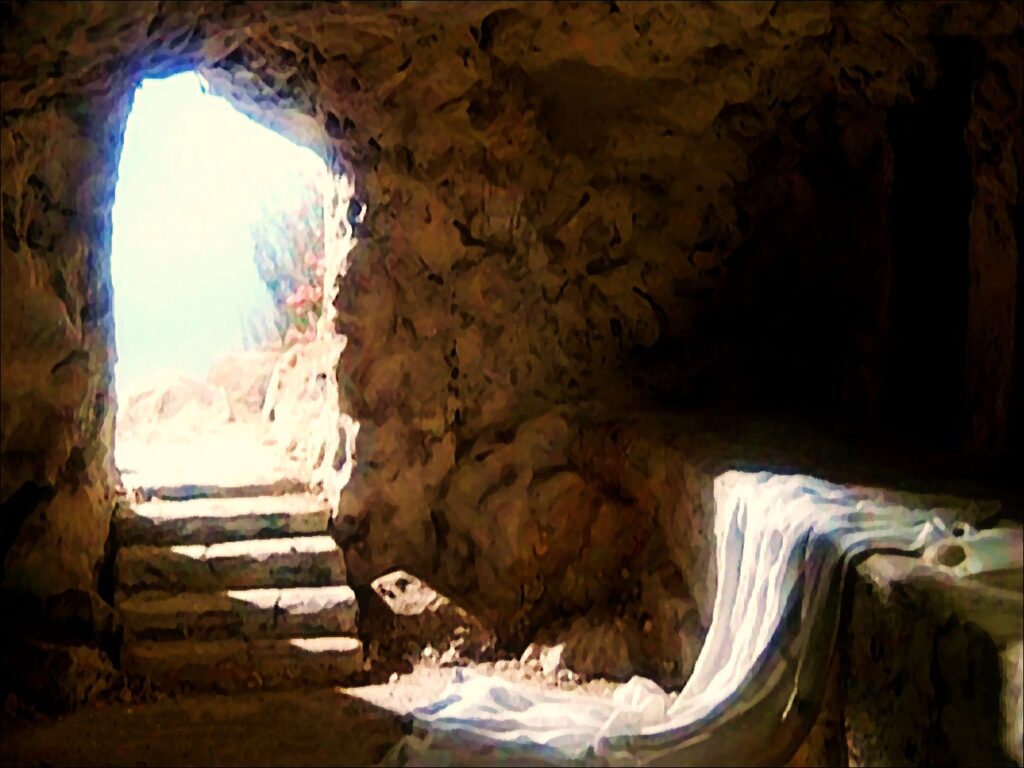Have you ever stopped to wonder what it would have felt like in those first few hours after the empty tomb had been found—after Mary Magdalene had delivered her breathless message to the angels in white? How would you have reacted? What would you expect to find?

“And seeth two angels in white sitting, the one at the head, and the other at the feet, where the body of Jesus had lain.
And they say unto her, Woman, why weepest thou?
She saith unto them, Because they have taken away my Lord, and I know not where they have laid him.”
For Mary, it must have been a period of unimaginable uncertainty intermixed with some half-hope and half-terror. The tomb that held the body of Christ had been opened, yet the man she had come to love was not there.
At this time of year, churches throughout the Christian tradition celebrate Easter. Similar to the experience of Christ, members of the LGBTQ community often feel left out of religion. However, Easter is a holiday that can bring exceptional meaning to the LGBTQ community.
At crucifixion, the story, it seemed, was over. Now convicted of sedition, scorned by the public, condemned to death by crucifixion, nailed to a cross on a hill called Golgotha, Jesus of Nazareth had endured all that He could. According to Mark, the earliest Gospel, Jesus, suffering and approaching the end, repeated a verse of the 22nd Psalm, a passage familiar to first-century Jewish ears: “My God, my God, why have you forsaken me?”
There was a final, wordless cry.
And then silence.
LGBTQ inclusive churches and its members can better serve their congregations by intertwining the story of Jesus’ Easter resurrection to the life-journeys of their gay church members. There is a great message for all of us in Easter. The heart of the Easter message is one of hope and “new life” in the face of betrayal, rejection and death. And there is a very literal message in coming out—whether from death’s tomb, or coming out from our self imposed prison of sexual or identity acknowledgement.

Among Latter-day Saints, the ordinance of baptism is celebrated in the same way Christendom celebrates the Easter holiday. Latter-day Saints highlight the death, burial and resurrection of the Savior through fully immersive baptism. This immersive process sheds the old life for a new life and creates the opportunity for progression—and authentic happiness. There is a direct correlation to coming out and living more authentically with the message of Easter.
The desire for authenticity is a goal familiar to many in the LGBTQ community; and especially among those who have come out. Similar to the Easter tomb, coming out allows us to replace our old life with a new life—one with greater opportunity to become whole. This coming out experience is a journey that allows us to further explore who and what we are.
Inclusive congregations and allies that embrace their gay and lesbian brothers and sisters can invite their LGBTQ friends and family members to, “… abide with us: for it is toward evening, and the day is far spent.” Gay and lesbian church members often relate to the feelings of betrayal once experienced by the Savior in the last months of His life. Religious authorities rejected His teaching of inclusivity; they scorned Him for dining with sinners and mocked him for engaging with the Samaritans. He was ridiculed for the time He shared with the marginalized, and eventually they crucified Him for challenging the self-important Pharisee insiders of the religious establishment.
A similar type of rejection appears in our modern day religions.
In churches world-wide, we see similar levels of intolerance with the LGBTQ community. Because of sexual orientation or gender identity, many of today’s religious leaders (and members of their congregations) choose to reject the spiritual thread Christ was teaching in His effort to establish a common bond of Love. The marginalized are removed from church membership in an effort to maintain comfort for the ‘normal’ masses. Churches have become proficient at mingling the philosophies of men with scripture to justify their lack of empathy or sympathy towards lesbian, gay, bisexual, transgender and queer people.
The scriptures teach, “Thou shalt love the Lord thy God with all thy heart, and with all thy soul, and with all thy mind. This is the first and great commandment. And the second is like unto it, Thou shalt love thy neighbor as thyself. On these two commandments hang all the law and the prophets.”

As we correlate the rejected life of Jesus, with experiences of rejection within the LGBTQ community we can see poignant similarities. At an early age, we learn that it is “different” to be LGBTQ. Many of us are taught that this difference is bad—even reprehensible, deviant, and disgusting. We try to hide it. We tried to pray it away. We made deals with God to remove it. We learned by experience that even if some people accept us, there are others who might not; and as a result, we get asked to hide who we are so as not to make them uncomfortable.
This teaches shame.
Many have been taunted, bullied, bashed and murdered for who they are. And, for some within the LGBTQ community, this rejection is beyond reconciliation and leads to suicide. There is no ‘resurrection’ for them in this life, only a hope for one in a promised life to come. The feeling of abandonment by some members in the Church in some ways has a resonance with the words of Christ in both the Gospels of Mark and Matthew, where He says, ‘My God, my God, why have you forsaken me?’’
This teaches fear.
As the meaning of Easter Sunday is revealed, we learn that Jesus wasn’t really forsaken—because God never abandons his children. The same message applies to the LGBTQ community: you are not alone and you have a purpose in this life. There are people who see you and need you.
Easter is the opportunity for many of us to hear different things from the scriptures. We learn that God’s deepest desires, as made known through the redeeming love of Jesus Christ, is “to seek and to save that which was lost.” During this season, each of us can proclaim with boldness that there is room for everyone within the gospel and that the resurrected Christ who stood at the open tomb is a Savior for everyone.
On the cross of the crucified, Jesus didn’t say “I am finished.” He said, “It is finished.” He was just getting started. Come out, come out wherever you are.
Just like coming out, and living authentically, the joy of Easter, is in parallel. There are no guarantees that we will live in a permanently happy society, or that society will become free from tension, pain or disappointment. But we can know that life is sometimes wonderful and sometimes horribly unpredictable—and within is a deeper level of reality—a world within the world, where love and reconciliation are ceaselessly at work; a world with which contact can be made so that we are able to live honestly and courageously with the challenges constantly thrown at us. And similar to the first Easter morning we are allowed to see, like Peter and John at the empty tomb, into the darkness for a moment— and find our world turned upside down where our joy made possible.

The stone was not rolled away from the tomb to allow Christ to come out, it was moved to allow others to come in. And so it is with each of us, we don’t come out because society demands it of us; rather, we come out to allow others the opportunity to get to know us for who we are. And once your allegorical stone has been rolled away, your progression will continue, too. You will stand stronger, and your story will be paralleled to Christ’s Easter rise from the tomb, where those who saw and knew him proclaimed with joy: “He is not here, for He has risen.”
For Christians, earth’s saddest and happiest days were in a four day period of time.
Come out. Rise. And move forward.
Happy Easter.



Comments are closed.